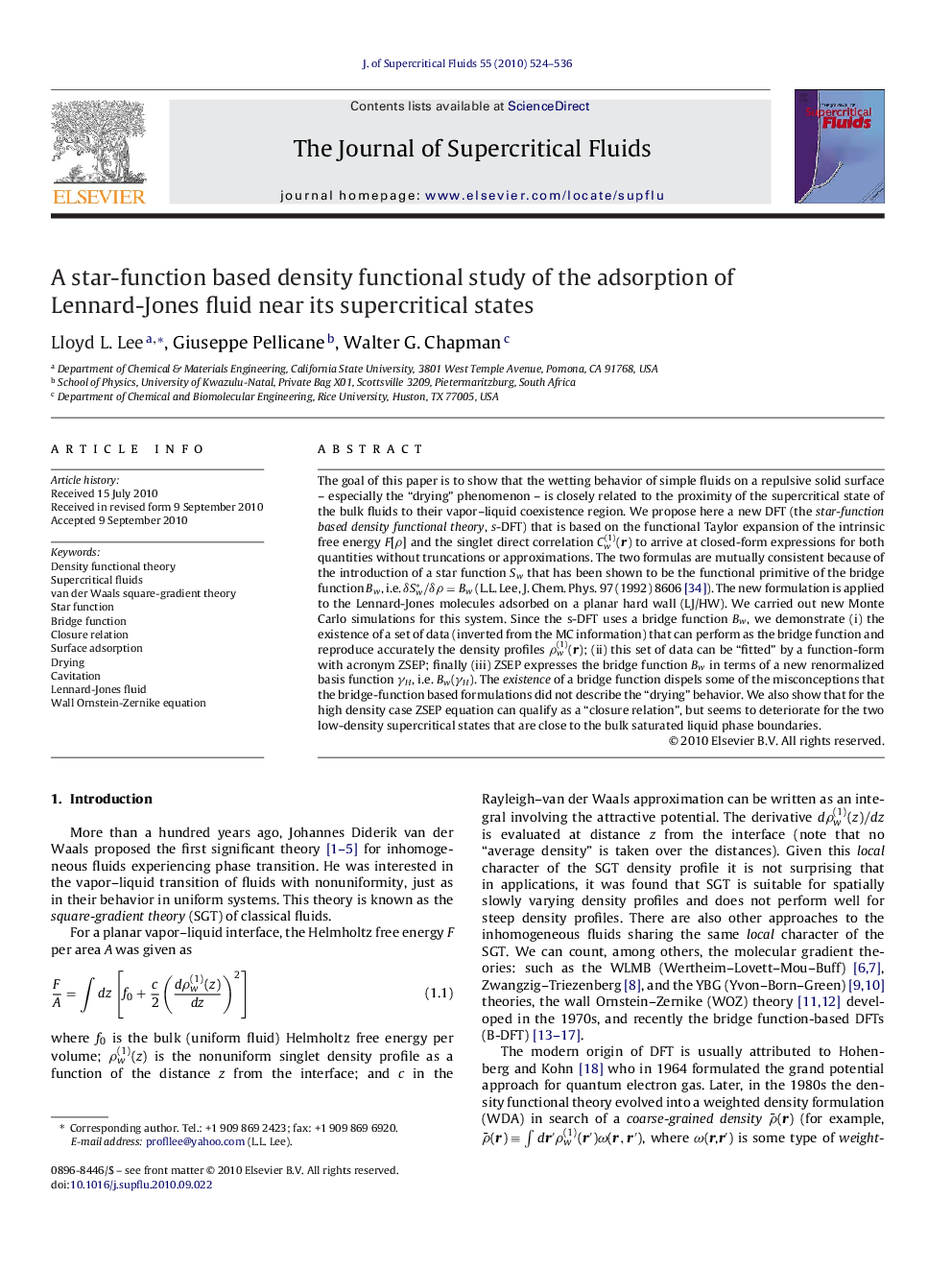| Article ID | Journal | Published Year | Pages | File Type |
|---|---|---|---|---|
| 231270 | The Journal of Supercritical Fluids | 2010 | 13 Pages |
The goal of this paper is to show that the wetting behavior of simple fluids on a repulsive solid surface – especially the “drying” phenomenon – is closely related to the proximity of the supercritical state of the bulk fluids to their vapor–liquid coexistence region. We propose here a new DFT (the star-function based density functional theory, s-DFT) that is based on the functional Taylor expansion of the intrinsic free energy F[ρ ] and the singlet direct correlation Cw(1)(r) to arrive at closed-form expressions for both quantities without truncations or approximations. The two formulas are mutually consistent because of the introduction of a star function SwSw that has been shown to be the functional primitive of the bridge function BwBw, i.e. δSw*/δρ=Bw (L.L. Lee, J. Chem. Phys. 97 (1992) 8606 [34]). The new formulation is applied to the Lennard-Jones molecules adsorbed on a planar hard wall (LJ/HW). We carried out new Monte Carlo simulations for this system. Since the s-DFT uses a bridge function BwBw, we demonstrate (i) the existence of a set of data (inverted from the MC information) that can perform as the bridge function and reproduce accurately the density profiles ρw(1)(r); (ii) this set of data can be “fitted” by a function-form with acronym ZSEP; finally (iii) ZSEP expresses the bridge function BwBw in terms of a new renormalized basis function γH, i.e. Bw(γH)Bw(γH). The existence of a bridge function dispels some of the misconceptions that the bridge-function based formulations did not describe the “drying” behavior. We also show that for the high density case ZSEP equation can qualify as a “closure relation”, but seems to deteriorate for the two low-density supercritical states that are close to the bulk saturated liquid phase boundaries.
Graphical abstractFigure optionsDownload full-size imageDownload as PowerPoint slide
